Blog
Fr. Andrzej's Blog
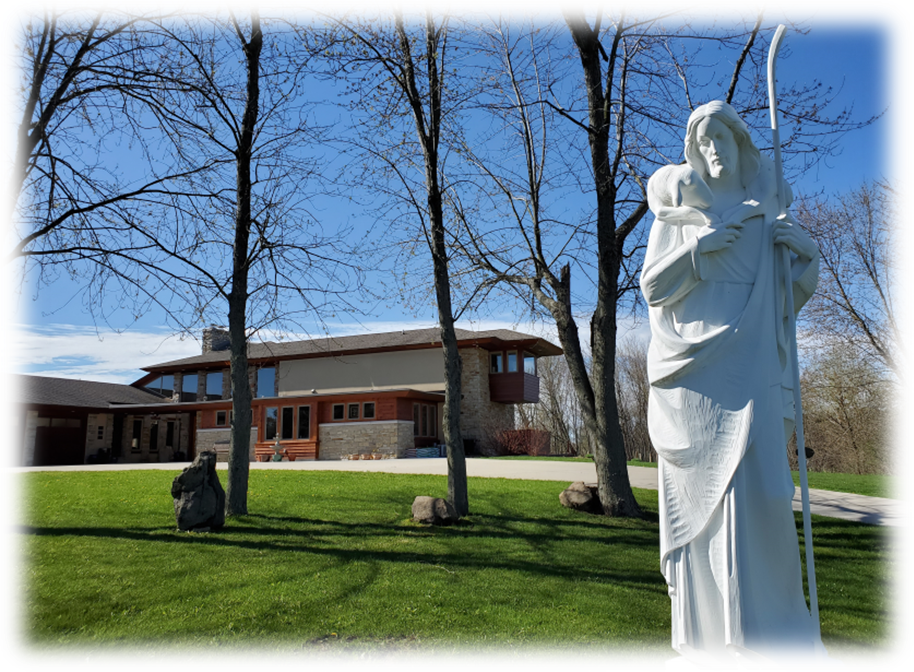
By Diane Winkowski
•
21 Apr, 2024
Fourth Sunday of Easter is traditionally called “Good Shepherd Sunday.” This name is determined by the gospel passage about the Good Shepherd, which we always read on this Sunday. Today we read the gospel of John. We learn the Good Shepherd loves his sheep and he knows them by name. The author of the gospel makes an important point, the Good Shepherd has a close relationship with his sheep and, contrary to a hired man, he does not run away but stays with his sheep during danger and time of trial. Additionally, the Good Shepherd searches for the lost sheep, finds it and brings it back to his fold. The first Christians knew and believed in Jesus as the Good Shepherd. In fact, the painting of the Good Shepherd is the most common of the symbolic representations of Christ found in early Christian art in the Catacombs of Rome, and was probably the most original image of Jesus Christ for the first Christian community (The painting of Christ as the Good Shepherd can be seen in the Catacombs of Priscilla on the Via Salaria in Rome). Fr. Leo John Dehon, the founder of the Priests of the Sacred Heart loved the image of the Good Shepherd as it is presented in the Gospel. When he visited the Catacombs in Rome, Fr. Dehon realized the image of the Good Shepherded represents well the truth of the Sacred Heart of Jesus. Since then, Fr. Dehon often spoke and presented the Sacred Heart as the Good Shepherd in his homilies and writings. Thus, Fr. Dehon beautifully described the Sacred Heart as Father, Mother, and Shepherd in his book, The Priestly Heart of Jesus , “The Heart of Jesus is overflowing with compassion for all those who suffer; those beset by troubles, difficulties, and hardships; for the hungry, the toilers, the destitute, and the sick and infirm. His is the heart of a Father, the heart of a Mother, the heart of a Shepherd” ( The Priestly Heart of Jesus, Thirty-Three Meditations , Chicago, 1947, p. 97). Today many SCJs repeat these words of Fr. Dehon at the beginning of Mass, during the penitential rite, when they encourage people to recall the love of God in their lives, because “his is the heart of a Father, his is the heart of a Mother, his is the heart of a Shepherd.” The Good Shepherd with a sheep on his shoulders, stands for Fr. Dehon as an icon of God, who is loving, kind, and merciful. God makes an incredible effort to reach everyone but especially those who are lost, unheard, and least among us. God sent his Son to save his people (Jn 3:16). It is God, in the person of Jesus Christ, the Good Shepherd, who loves his sheep and is ready to leave the ninety-nine to find the lost one (Lk 15:3-7). “Move out of the sacristy and go to the people” became an essential part of Fr. Dehon’s spirituality and ministry. According to his biographers, Fr. Dehon did not only write and speak about God in the image of the Good Shepherd, but in his own life he also followed the idea and example described in the Gospel. Fr. Dehon loved the people with whom he worked and ministered to. He tried to reach everyone in his community, local Church and in the missions. He practiced the availability and kindness of a Good Shepherd during his ministry, and when he was at home with his community. He was able to listen and understand them. Because of his pleasant and warm personality, Fr. Dehon was known as “Le Très Bon Père” [the very good father] (Andre Perroux, Leo Dehon: Passion for Christ: A Passion for the World , Hales corners, WI, p.71). We are encouraged by today’s gospel and the example of Fr. Dehon to see God as the Good Shepherd. God searches for our close relationship and takes care of us during trial and danger. We are encouraged to trust in God because we are safe in his fold. At the same time, we must spread and continue the mission of the Good Shepherd in our community and society. In our most recent Vision and Mission statement as St. Martin of Tours parish, “we strive to follow the example of Jesus Christ to serve those in need and to become the Good Shepherds for them.” Let’s remember to become the Good Shepherds to those in need and to each other in our parish and larger community during this Easter season. Fr. Andrzej
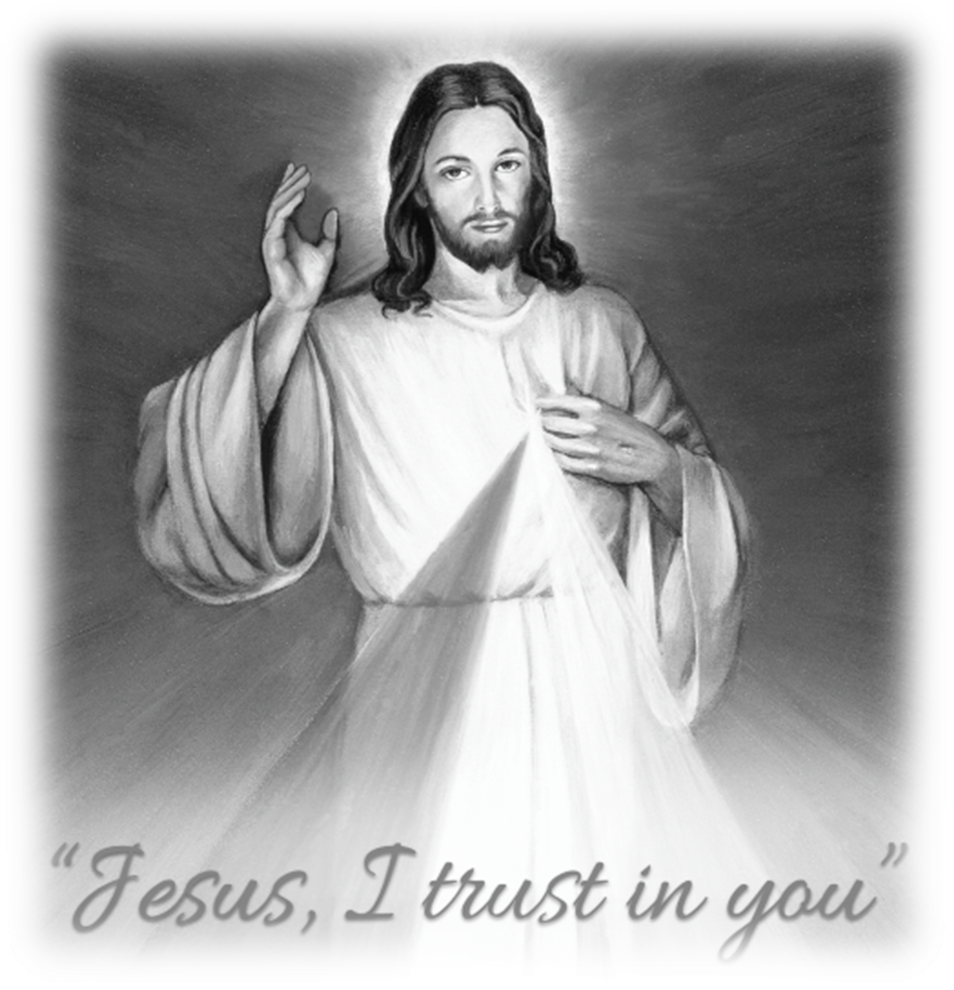
By Diane Winkowski
•
07 Apr, 2024
The Second Sunday of Easter ends the Easter Octave. The Second Sunday of Easter was once called “Dominica in albis,” (Sunday in white) because it was on the eighth day the newly baptized at the Easter Vigil finally took off the white robes they were given at the baptismal font. They were considered as fully baptized and proficient in faith. Octave, which comes from the number eight in Greek, has a symbolic meaning in the Bible. It means accomplishment, fullness, and beginning of new reality. When eight is mentioned it means something new or complete. God created the world in seven days and on the eighth day, the new world started to function. New creation, the harmony created out of chaos, began to function. Thus, every important event and feast has an octave to prolong and celebrate it to the fullness. After the octave it is accomplished. Number eight was significant for Jews as well. New babies must be presented in the temple on the eighth day after the birth. Many purifications, circumcisions, and offerings were prescribed on the eighth day in the Hebrew culture and faith. We always read the gospel about Jesus and Thomas the second Sunday of Easter. Thomas doubted the resurrection of Jesus but his personal encounter with the Lord healed his unbelief. It is meaningful that Jesus met and reconciled with doubting Thomas on the eighth day after his resurrection. It is a beautiful message to all of us who doubt and hesitate to follow Jesus to the fullness. Today ends the Easter Octave. We must believe to the fullness and spread the message of resurrection to the whole world. The Second Sunday of Easter is also celebrated as Divine Mercy Sunday. This feast is one of the newest and has been celebrated in the Church for twenty-four years. On Divine Mercy Sunday, April 30, 2000, Pope John Paul II canonized Saint Faustina Kowalska and dedicated the World to God’s Mercy. The same day, the Pope declared the Second Sunday of Easter as "Divine Mercy Sunday.” In his Bull, Misericordiae Multus, introducing the Jubilee Year of Mercy (2015), Pope Francis calls Jesus Christ “the face of the Father’s mercy.” According to Pope Francis, Mercy does not mean forgiveness of sins and mistakes. It is rather about practicing the ‘works of mercy.’ Mercy means love in action. When we practice the ‘works of mercy,’ love in action, we continue the mission of Jesus and are called “the face of the Father’s mercy” as well. The Pope challenges us to go to the people to practice charity. As Christians we are not just called to pray and enjoy our relationship with God, we are called to be for others and practice mercy. “I desire mercy, not sacrifice” (Mt 9:13). Divine Mercy Sunday reminds and encourages us to proclaim the resurrection of Jesus not just with words but to practice it with works of mercy. It is more authentic and meaningful when we practice what we believe. Divine Mercy message encourages us to be “the face of the Father’s mercy” for those who are in need. Let’s make an effort and find those who are in need of God’s mercy at St. Martin of Tours. “All grace flows from mercy, and the last hour abounds with mercy for us. Let no one doubt the goodness of God; even if a person’s sins were as dark as night, God’s mercy is stronger than our misery … One thing alone is necessary; the sinner set ajar the door of his heart, be it ever so little, to let in a ray of God’s merciful grace, and then God will do the rest.” ( The Diary of St. Maria Faustina Kowalska , 1507) Fr. Andrzej
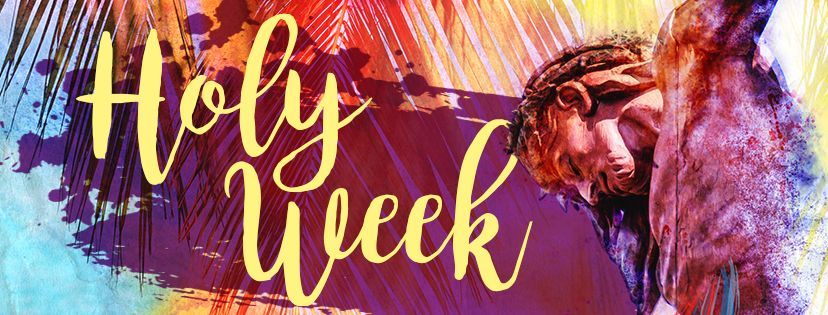
By Diane Winkowski
•
24 Mar, 2024
This week we begin Holy Week. It is the most important and meaningful week in the liturgical year. Not just the Lenten season but the entire Liturgical Year prepares us for the celebrations of the Holy Week. Holy Week begins with Palm Sunday, when Jesus made his final entrance into Jerusalem, and culminates with Easter Sunday. As it has been a tradition at St. Martin of Tours, we will commemorate the solemn entrance of Jesus with a procession with palm branches before every Mass. Another tradition of our parish community on Palm Sunday is the brunch. Hopefully you will join us for a delicious breakfast with your entire family and friends. It will be a wonderful opportunity to begin this holy time with fellowship and community support. Every day of Holy Week is holy. It is up to each of us to make it special in our personal, family, and community life. Make an effort to be closer to God and each other during these blessed days. As Holy Week progresses to its final days the solemnity heightens. Sundown on Holy Thursday to sundown on Easter Sunday is considered the most solemn part, the pick of Holy Week. This three-day period is referred to as the Easter Triduum, also known as the Sacred Triduum, or Paschal Triduum. The name ‘Sacred Triduum’ comes from Latin words, and literally means ‘three holy days’ or rather, ‘three holy events,’ which totally changed the salvation history. We will once again celebrate the Passion, Death and Resurrection of our Savior, Jesus Christ during these three holy events. The evening Mass on Holy Thursday begins the first event, which is the celebration of the Lord's Supper. This is where the Church re-lives the institution of the Eucharist and the Holy Sacrifice of the Mass, as well as the institution of priesthood. The Last Supper Mass is scheduled at 7pm at St. Martin of Tours. The beautiful ceremony of "washing of the feet," which is a meaningful part of the Mass of the Lord’s Supper, reminds us about Jesus, who “came not to be served but to serve and to give his life a ransom for many” (Mt 20:28). It is an invitation to all of us to serve others. The second sacred event of the Sacred Triduum is Good Friday. The Church commemorates and celebrates the day of the Passion and death of Jesus. There are many traditions and devotional celebrations on Good Friday. In our parish we have the Stations of the Cross at 3pm. This year we will have two different Stations of the Cross. One outside around the cemetery led by our religious education youth and children, and the other inside the church led by Human Concerns. Feel free to join either group. Then, as it is in our tradition we will serve soup at 5pm prepared by different groups and individual people. This simple bowl of soup reminds us about fasting and abstinence on Good Friday. The main Good Friday liturgy is scheduled at 7pm. We will read the Passion of Christ and Venerate the Cross. Hopefully each of us will have a moment to encounter the cross of Jesus during the liturgy or afterwards at the tomb of Christ in the narthex. Holy Saturday used to be called Black Saturday. ‘Black’ refers to the fact Jesus descended into hell (Apostles Creed). Jesus enters the underworld to visit the dead, who were awaiting salvation. Upon his entering, Jesus frees them from the chains of death ( Liturgy of the Hours , Office of Readings, Holy Saturday). Holy Saturday is a day of silence, emptiness without singing, and decoration in the churches. Another beautiful tradition on Holy Saturday is the blessing of Easter baskets at 3pm. Please bring any kind of food you will have at the Easter table for the blessing on Holy Saturday. The third sacred event of the Sacred Triduum is the celebration of resurrection. Easter Vigil will begin at 8pm with a meaningful celebration of darkness and light, fire and water, the World of God and Eucharist. We will sing solemn Alleluia and renew our baptismal promises during our celebration of Easter Vigil. It will be a wonderful celebration of new life, which Easter announces to the World. Easter Sunday ends Sacred Triduum and begins Easter season. Masses are scheduled as usual on Sunday at 8:30 and 10:30am in English, and 12:30pm in Vietnamese. I am grateful and encouraged by the fact, both communities of our parish, English and Vietnamese, will celebrate the Sacred Triduum liturgies together, as one Christian family. Please join us for these most solemn celebrations of our Catholic faith. Fr. Andrzej
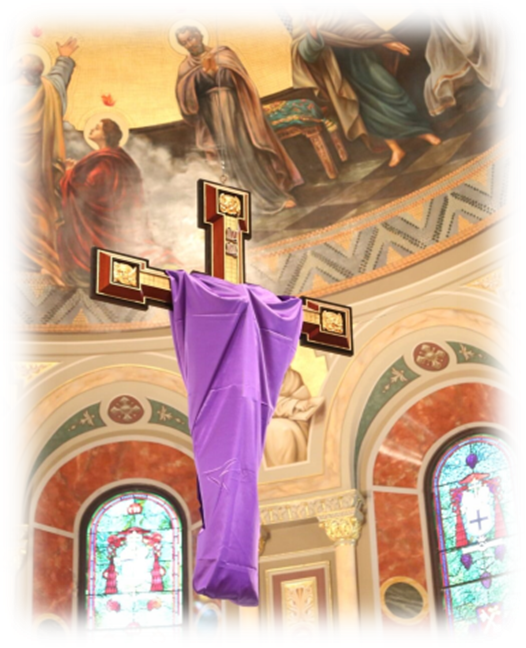
By Diane Winkowski
•
18 Mar, 2024
Traditionally we veil crosses on the Fifth Sunday of Lent. Besides removing water from the baptismal font, simplifying decorations in the church, no flowers in the sanctuary, and keeping liturgy modest, veiling crosses is another meaningful symbol during Lent to bring us closer to the celebration of the Passion, Death, and Resurrection of Jesus Christ. While it may appear surprising to veil crosses during the final weeks of Lent, the Catholic Church recommends this practice to heighten our senses and build within us a longing for God, who gave us his Son Jesus Christ to die for our salvation on the cross. In fact, this custom of veiling crosses comes from an ancient tradition of the Middle Ages. In the east the tradition of covering of sacred items and places is well preserved even today. Everything considered sacred, sanctuary, tabernacle or chalice must be covered with a veil or holy icons. The western tradition lost this beautiful tradition but the liturgy preserved it during Lenten season. Nowadays, Introductio n to the Roman Missal encourages us to continue this old tradition in our churches, “In the Dioceses of the United States, the practice of covering crosses and images throughout the church from the fifth Sunday of Lent may be observed. Crosses remain covered until the end of the Celebration of the Lord’s Passion on Good Friday...” The theological significance of the veils is found in how they offer an outward and visible reminder of the penitential nature of the season. The veils obscure from our vision the holy images that enlighten our worship life, and in doing so remind us our sinful nature has obscured our vision of God’s truth. The veils and other symbols of simplicity in our church are one of many ways we are invited in Lent to embrace a penitential disposition — a disposition that engages our sinfulness and renews our vision of that which is good and holy. The crosses are unveiled on Good Friday during the celebration of the veneration of the cross. When the veils are taken away, we are blessed with the unveiled truth of Jesus’ suffering and death for us, but at the same time, with unconditional love of God. The removal of veils serves to remind us of where our Lenten exercises and resolutions have sought to bring us, and that is to a place of renewal, spiritual nourishment, hope, and a clearer vision of the beauty of God. Practically, veiling crosses heightens our spiritual senses to form within us a longing for God. We are even more encouraged to search for and contemplate God in simplicity of Lenten liturgy of the Word and Eucharist and in our neighbor, who is in need, rather than see God through images of the cross and holy statues. Finally, the veils are not meant to be there forever. Crosses need to be unveiled. It is unnatural for them to be covered. The unveiling of the cross on Good Friday, just before the Easter Vigil, is a great reminder of our own life on earth. We live in a “veiled” world, in exile from our true home. It is only through our own death the veil is lifted and we are finally able to see the beauty of everything in our lives. Fr. Andrzej
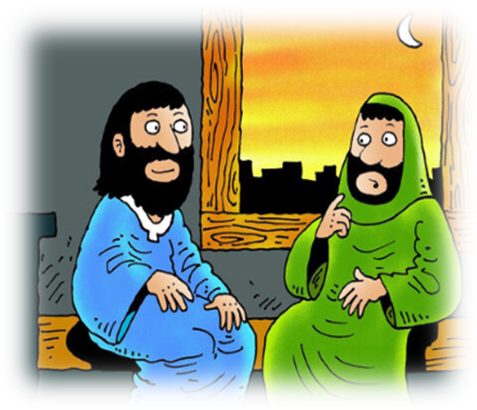
By Diane Winkowski
•
08 Mar, 2024
Many commentators of the Scripture speak about the Fourth Sunday of Lent gospel as one of the most meaningful and beautiful. Indeed, there are many symbols and profound meanings in today’s gospel. I would like to mention just two valid elements that are helpful for our repentance and conversion during Lent, trusting in God and dying to sin. These two elements are necessary to turn away from evil and renew our relationship with God. When Jesus explained conversion to Nicodemus, he used an example from the Book of Numbers in the Old Testament (John 3:14-21). It was about a nest of poisonous snakes, which was encountered by Jews during their journey through the desert. Many were bitten with a painful bite and many died. God, however, told Moses to make a bronze serpent and put it on a pole and all who looked upon it were healed and saved. It is interesting how God chose to save his people asking them to look up while the snakes were on the ground. The first reaction tells me it was illogical and confusing perhaps. But in fact, it is fascinating to know God’s ways to save his people. Like everything in the Bible, the scene with snakes has a symbolic and spiritual meaning. It is supposed to guide us when we struggle with evil in our life. Instead of spending all time and energy to fight against evil, and our wrong doing, we must learn to trust in God. The gesture of looking upon the snake on a pole is an invitation to share our struggle with God. God does not want us to be alone when we struggle. We must trust in God and pray even more when we are challenged by temptation and sin. Instead of feeling unworthy and running away, God is asking us for total trust to God’s guidance through our challenges and sinfulness. Our fight for God and closeness with God is more effective than just fighting with our struggles and weaknesses on our own. Jesus recalls this example from the Book of Numbers and brings to Nicodemus this very request of God in today’s gospel. Nicodemus who came from darkness of night with his struggles and confusion, cannot resolve his problem alone. He must open up and trust in God totally. It is like being born again and becoming a new person. Second condition of true repentance and conversion is dying to sin. In today’s gospel Jesus foresaw his death on the cross. Like that serpent lifted up by Moses in the desert, Jesus believed his crucifixion and death on the cross will save his people from their sins. We learn from Jesus it was necessary to die for sins. Indeed, we must die for our sins when we are serious about repentance and conversion. We realize our wrongdoings, confess our sins in Sacrament of Reconciliation, repent with a good intention, but we often fail to turn away from our sinfulness. We like our sins and our old ways, and thus, fall into the same sins again. Then, we are discouraged because our repentance and conversion does not work. The Greek word for conversion is metanoia (μετάνοια). One of the literal translations of metanoia is changing one’s mind. According to metanoia in such understanding, conversion is not just temporarily turning away from evil but totally changing our thinking. It is like dying for that sin that constantly bothers me and stands between God and me. This kind of disposition against sin, which we usually like and do not want to go, is not easy and even painful. That is why today’s gospel compares it to the crucifixion of Jesus, who fought sin to the point of pain, blood, and death on the cross. We must die to our sins after the example of Jesus. If we succeed to die with Christ, we will raise with him on Easter. Today’s gospel is helpful to us as we pray and reflect about our spiritual growth during Lent. The two conditions, trusting in God and dying to sin, are necessary to experience true repentance and conversion. There are a few opportunities for Sacrament of Reconciliation before Easter at St. Martin of Tours. Please have courage and do not hesitate to meet your sinfulness and then, to experience God in your true conversion during this blessed time of Lent. Fr. Andrzej
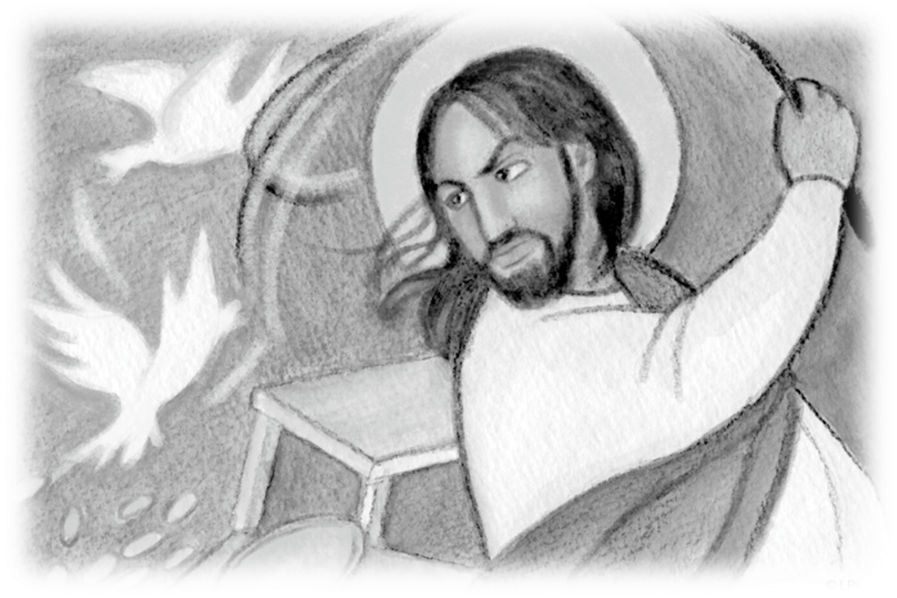
By Diane Winkowski
•
08 Mar, 2024
Lent, as a season of preparation for the Paschal Triduum and Easter, encourages us to slow down and reflect upon the essential elements of our life. One of the essential aspects which easily could be forgotten in our busy life is sacrum, which is sacred reality. Sacrum is God but also times, places, values and objects that must be always special to us. Lent reminds us about healthy balance between sacrum and profanum. We need both sacrum and profanum (sacred and profane) in harmony and respect to each other. We need the profane realities as much as we need the sacred, because the profane makes the sacred special. We must accept and respect both, and certainly do not confuse or mix it up in our life. I spoke about the sacred and profane realities during my homily the 29th Sunday in Ordinary Time, 2023. Third Sunday of Lent reminds us about it. Lent is time to look it over again. In today’s gospel, Jesus cleansed the temple of Jerusalem by driving out those who disrespected the holy place. “He found in the temple area those who sold oxen, sheep, and doves, as well as the money changers seated there. He made a whip out of cords and drove them all out of the temple area, with the sheep and oxen, and spilled the coins of the money changers and overturned their tables, and to those who sold doves he said, take these out of here, and stop making my Father’s house a marketplace” (John 2:14-16). Jesus was angry and his action seems forceful. This is how Jesus cared for a sacred place and reality. Jesus’ care and passion for the temple was at the same time his care for people who used that sacred space to worship and encounter God. In fact, sacred places, time and objects are given to us to encounter God. We need the sacred to protect us from the profane and bring us closer to God. Sacred places and objects are consecrated to God, which means they are removed from regular use and reserved for God. For example, the church, sanctuary, altar, chalice and many items are consecrated, thus they must be never used for anything other than worship and liturgy. There are also places, things and values in our family and personal life that are sacred and we must respect and never misuse them with the profane. We all need special times and places to reflect and pray to God. Otherwise, our busy schedule and daily activities will take over everything. We need to reserve and protect certain places, times and things to make it possible. Let’s remember the sacred reality in our personal, as well as our family and community life during Lent. Let’s be more aware, and perhaps, redefine what sacrum means to me and to us. Let’s pray for guidance and our perseverance during Lent. Direct, O Lord, we pray, the hearts of your faithful, and in your kindness grant us this grace, that, abiding in love of you and our neighbor, we may fulfill the whole of your commands. Through Christ our Lord. (Adapted from Roman Missal, Third Sunday of Lent) Fr. Andrzej

By Jenny Drzewiecki
•
25 Feb, 2024
Lent is a blessed season to prepare us for the Paschal Triduum and Easter. It is a unique time in the liturgical year which encourages us to slow down, reflect, and take care to experience and celebrate the Risen Lord on Easter Sunday. Thus, we make an effort to fast, pray, and help others. This makes sense when we grow and make progress in our spiritual life. It makes even more sense when we experience positive change moving away from evil to good. Accordingly, this positive change is necessary to experience the Risen Lord during Easter. It is providential we reflect on the Transfiguration this Second Sunday of Lent. Transfiguration comes from the Greek word metamórfosi, which means change. In the gospel today Jesus went up to Mount Tabor and was transfigured before his disciples. His body and clothes were totally changed, “became dazzling white, such as no fuller on earth could bleach them” (Mark 9:3). Today’s reading illustrates what Lent is about. Our effort like climbing a mount or even hill will be rewarded at the peak when we experience the Risen Lord. Additionally, transfiguration reminds us of our ultimate destination in heaven. Our body also will be changed in heaven, and become like the body of Jesus on Mount Tabor. There are two great prophets who were present during the transfiguration, Moses and Elijah. Both of them spend their entire lives in a desert and were well known as prophets of the desert. They remind us we need a desert, detachment from our busy life, reflection, and prayer during Lent. We need to find a desert, special place and time for God, during our journey of Lent. This kind of personal desert makes our effort to grow spiritually more effective. Perhaps you noticed the theme in our church this Lent is about desert. Also, there is no water in the baptismal font to remind us the necessity of a desert place during Lent. Lastly, our spiritual effort and close relationship with God are very attractive. When we take it seriously and our effort becomes a habit of daily routine, we want to remain with God forever. At the end of the Transfiguration Peter suggested building tents to prolong his experience of the desert and exaltation forever. He loved that place and moment. “Rabbi, it is good for us to be here; let us set up three tents: one for you, one for Moses, and one for Elijah” (Mark 9:5). Contrary to his offer Jesus asked his disciples to return to the town to meet the people. It is a good reminder and encouragement for us that our spiritual effort during Lent must be rooted in our daily realities. Whatever we decide to practice and offer during Lent, more prayer in the desert, fasting or alms giving, our effort must be practical and include the needs of our neighbor. Our spiritual growth makes sense if it brings us closer to God and people. Let us pray for each other to have a transforming experience during this blessed season of Lent. Fr. Andrzej
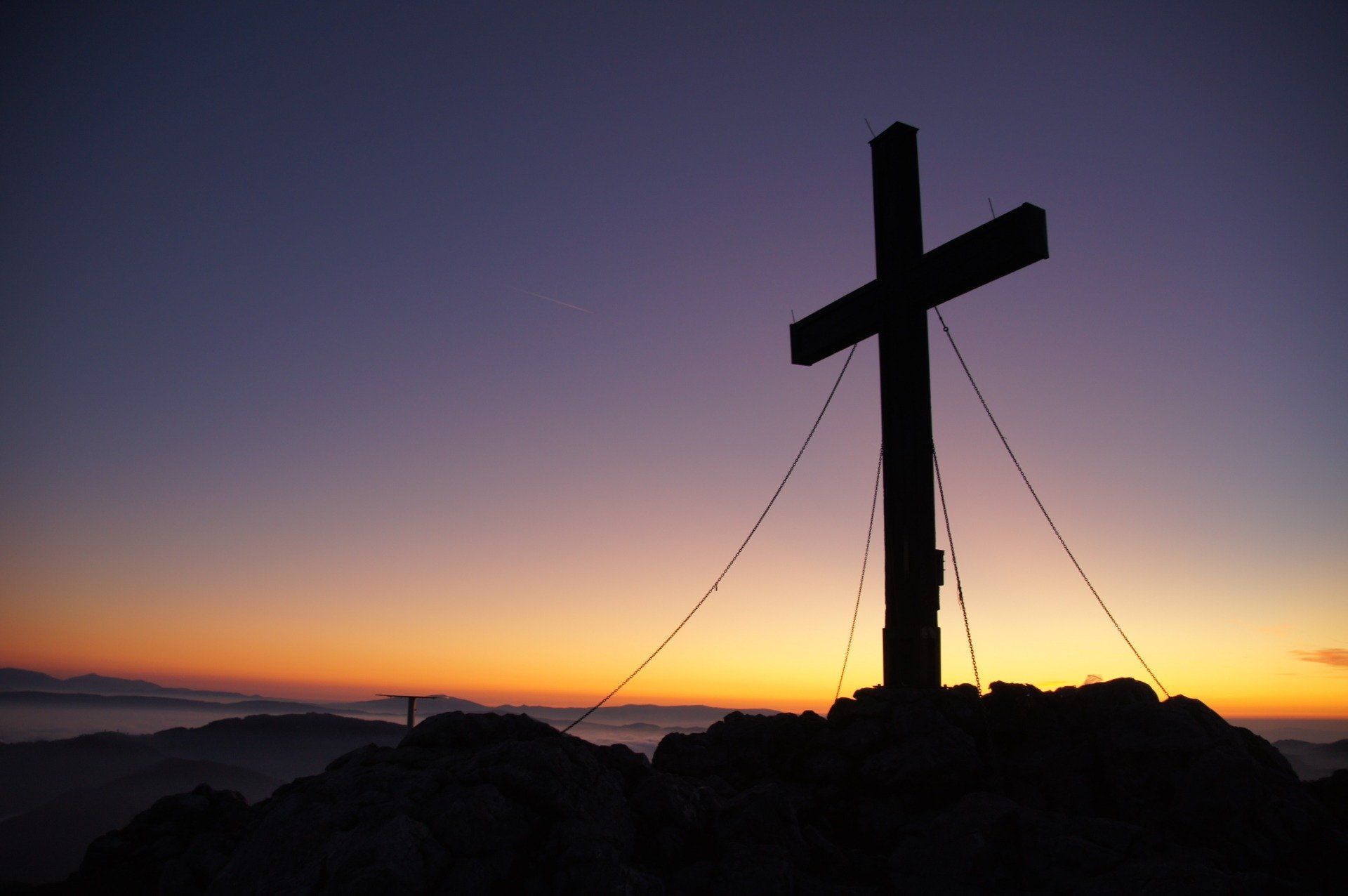
By Jenny Drzewiecki
•
11 Feb, 2024
The Sixth Sunday in Ordinary Time is the last one before Lent. We are about to begin this blessed liturgical season to prepare us for the Paschal Triduum and Easter. Lent encourages us to slow down and reflect about essential aspects of our live. Moreover, there are many opportunities during Lent to reflect on our relationship with God and our neighbors. Perhaps there is a hurt or even hatred in our heart. The liturgy of Lent and Jesus’ example will encourage us to face these and forgive. The three spiritual pillars suggested by the Church for Lent, prayer, alms giving, and fasting, will make sense if they help us to reconcile with God, our neighbors and ourselves. Lent begins on Ash Wednesday. Ash Wednesday, similarly to Good Friday, is an obligatory day of fasting and abstinence for Catholics. Additionally, Fridays during Lent are obligatory days of abstinence. There are three Masses on Ash Wednesday at our parish at 8:30am & 6:30pm in English, and 8pm in Vietnamese. Please join us for our Ash Wednesday liturgy to begin the journey of Lent with prayer and God’s blessing. St. Martin of Tours parish offers many celebrations and events to practice our faith and prepare well for the Pascal Triduum and Easter. I will just mention a few. Traditional Stations of the Cross will be led by various groups (including youth and children) on Fridays at 6pm. A Lenten Retreat will be facilitated by a guest speaker on March 6 at 6:30pm. Penance service and Sacrament of Reconciliation are scheduled twice, 6pm on March 6 and March 18. Holy Week liturgies, especially the Pascal Triduum (Holy Thursday, Good Friday, Holy Saturday and Easter Sunday) culminate our Lenten Journey. It will be solemnly celebrated at our parish in similar form and time as last year. The details and time will be provided soon. Additionally we have a few formation and social events during Lent and Holy Week. We encourage families to join the Children and Youth Mass on March 3. We will pray and explain to children the meaning of Lent. Everyone is invited to join the adult formation sessions on Thursdays about Eucharist and then, about the Bible with discussion and practical implementation. I am grateful to the Adult Formation Ministry for organizing these sessions for us. There will be a parish dinner on March 2 and traditional brunch on Palm Sunday. We invite families to join us for a parish outing to cheer the Milwaukee Wave on March 10. This kind of social events bring us together as one community and give fraternal support to each other. There are many other ministries, prayer and social events during Lent. Please see the parish kiosks, boards, and website for more information and details. Let’s pray for each other as we begin this blessed season to make it more meaningful, effective, and holy. “Grant, almighty God, through the yearly observance of holy Lent, that we may grow in understanding of the riches hidden in Christ and by worthy conduct pursue their effort. May bountiful blessing come down upon your people that hope may grow in tribulation,virtue be strengthen in temptation, and eternal redemption be assured”.(Roman Missal, First Sunday of Lent) Blessed Lent, Fr. Andrzej
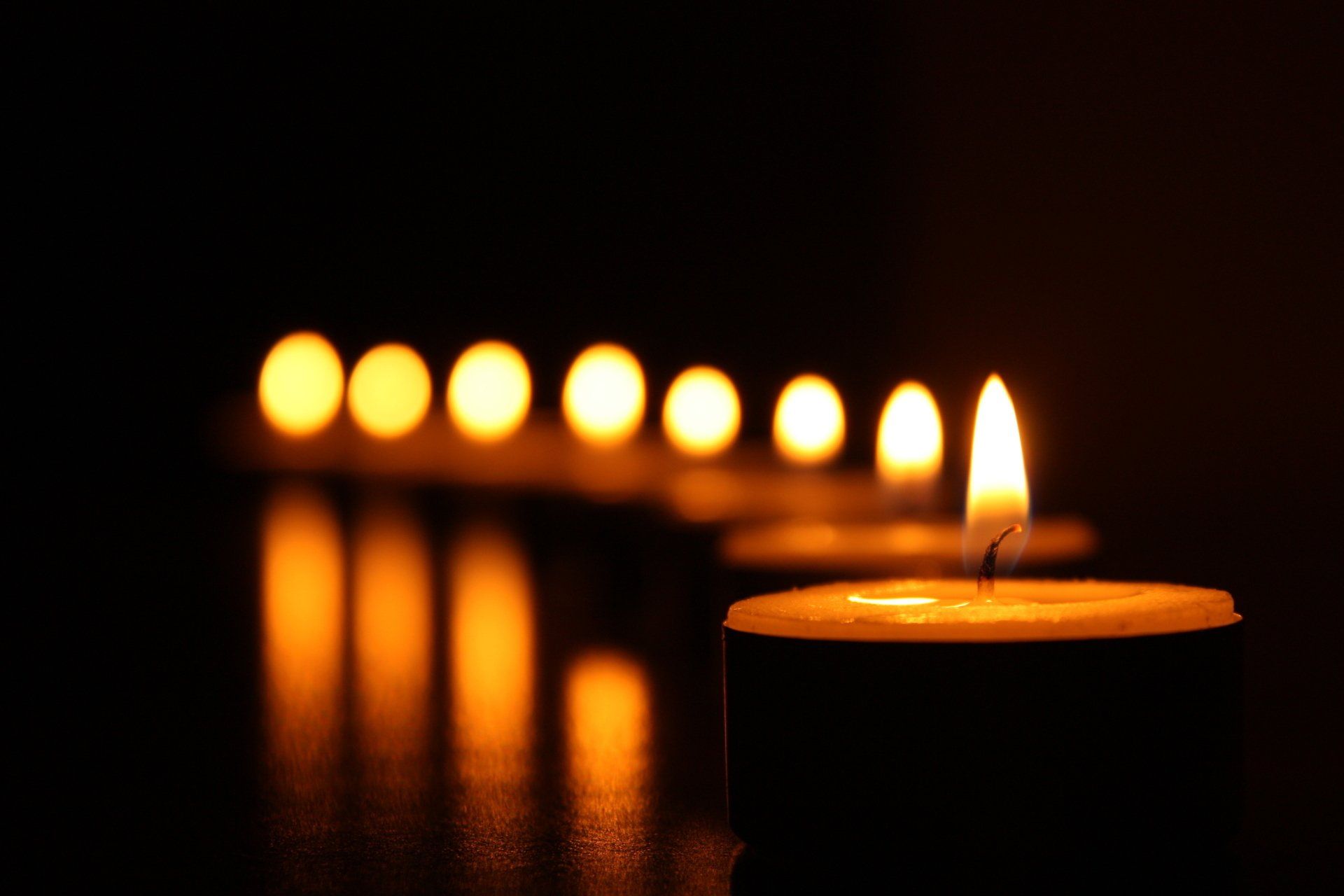
By Jenny Drzewiecki
•
02 Feb, 2024
Saint Blaise was the Bishop of Sebaste in Armenia (modern Turkey) around 1,700 years ago. There are many versions of his life but he is best known for healing the sick – even animals would come to him to be cured. Some biographers tell of how Saint Blaise left Sebaste to escape Roman persecution. He made his home in a mountain cave and lived there until he was found, brought back to Sebaste and arrested. On his way to prison, Saint Blaise met a mother whose son was choking to death on a fish bone. He cured the boy and to show her gratitude, the mother brought candles to light his prison cell. In another version of the story, Saint Blaise met a woman whose pig had been taken by a wolf. He commanded the wolf to return the pig and it was this woman who brought the candles for his cell. In prison, Saint Blaise was ordered to renounce his faith. He refused so was beaten with wool combs and beheaded (+316 AD). After his death, he was made a saint and has become the patron saint of wool combers, wild animals, candle makers, and ailments of the throat. Blaise’s cult spread quickly throughout Christian World. He was venerated as the patron of sufferers from throat diseases in the East by the 6th century and in the West by the 9th century. His feast day has been celebrated on February 3. One of the traditions associated with St. Blaise is the blessing of throats practiced and celebrated on his feast day. It is a ceremony of healing and asking the Saint for his strength and protection. In short, we are not certain to which extent the Blaise’s biographers were accurate. But biographical details are not essential. Blaise is seen as one more example of the power those have who give themselves entirely to Jesus. As Jesus told his apostles at the Last Supper, “If you remain in me and my words remain in you, ask for whatever you want and it will be done for you” (John 15:7). With faith we can follow the lead of the Church in asking for Blaise’s healing and protection. We continue the tradition of Saint Blaise at St. Martin of Tours parish. The blessing of throats is celebrated At all Masses this weekend. Please join us for the blessing and believe in the healing power of God.


